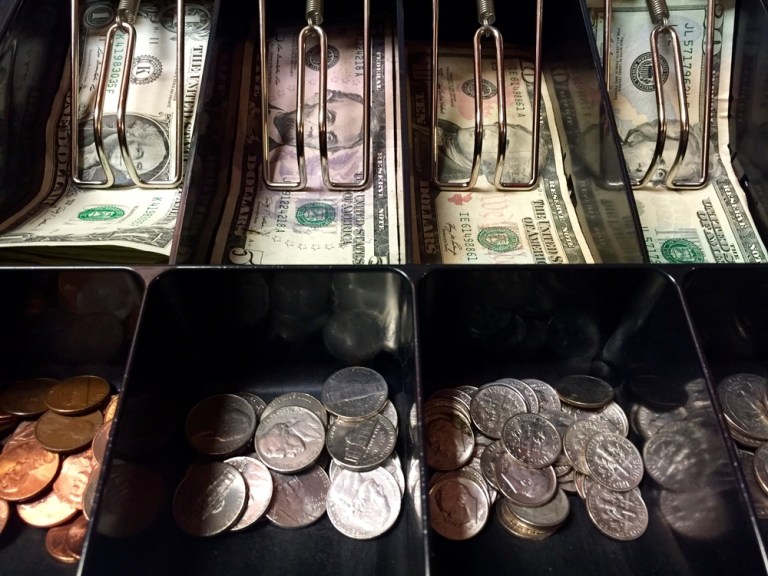
Paysafe’s latest research shows that 54 percent of consumers think they’ll be making more use of digital cash in the next two years. According to Joseph Daly, COO of Payments Processing at the firm, what comes next dovetails with a much more personalized retail experience.
Cash. Plastic. Never the twain shall meet.
Paysafe’s recent study on consumer attitudes to cash, “Lost in Transaction,” details the way notes and coins are evolving in an increasingly mobile age.
Tracking payment methods and consumers across the United States, the United Kingdom and Canada, the study queried more than 3,000 individuals to reveal some changes in how money is viewed and used.
The mobile movement may be gathering momentum. Findings from the study show that 54 percent of consumers expect to take up digital formats of cash in the next two years. The tally of the average amount of notes and coins in one’s wallet stands at $50 in the U.S., and less than that in Canada. Only a little more than half of consumers visit an ATM monthly. And in the adoption of new payment methods, mobile wallets stand at one in three.
All of this begs the question: What is the tipping point that has been moving people from cash payments to alternative cash formats, setting the stage for a lot of change in retail?
In an interview with Joseph Daly, COO of Paysafe Payments Processing, North America, the executive said that within the U.S., “you really have to look at a few segments in the marketplace.”
One segment is defined as generational. For the younger set (a.k.a. millennials), “plastic does not even have to be a card anymore; it means access to … schemes such as Visa and Mastercard, perhaps through mobile devices … they will get on that and stay on that.”
Mobile remains the conduit through which people shop, via Amazon and other retail websites and platforms. Consumers seek “instant gratification,” a feeling that used to come when one walked into a store. Case in point: Walmart offers two-day shipping, and Amazon will send an item on the same day of purchase. Video games? Funded by the youngsters with a debit card or prepaid card.
For the older generation, by way of contrast, “plastic is used as a convenience, cash as comfort,” according to Daly. When renting a car, older consumers will use a credit card over a debit card. For a smaller purchase – at a convenience store, for instance – a debit card will take precedence.
But even the generational divide is starting to turn, said the executive, because of the ease and the lack of friction when it comes to using cashless options. Credit card usage is on the rise as people pay bills online and grab the rewards that are associated with those cards.
The subset that continues to remain loyal to bills and coins, said Daly, is the unbanked or underbanked portion of society. Cash allows for some independence, and yet the advent of the debit card that allows for credit access has been gaining traction among these consumers.
Harkening back to credit card rewards, Daly said that when it comes to retail, the days of loyalty are upon us, with emails flooding inboxes and “secret shopper” discounts or cash-back options proving to be a lure.
Notably, when retailers offer rewards, the conduit is to use cards, not cash – based in part on algorithms that track what has been purchased in the past and what is likely to be bought in the future, said Daly.
If rewards are getting a makeover, so too is the retail experience in general. Simply put, browsing and buying is evolving into a tactile experience that sports a tailored fit. Data has been collected via card, phone, website and now, with a customer in a brick-and-mortar environment, the experience becomes intensely personal, said the executive.
An instant message can appear advertising a sale on men’s shirts. Some retail shops are even establishing their own mobile wallets, Daly told PYMNTS. Real-time inquiries, soliciting input (and interaction from consumers) can span sizing of items or alerts as to what might complement what you bought last time in the same location or at the same chain. The retailer, he said, seeks to boost consumption by “becoming more personal about your life … it’s not about [the salesperson] repeating your name anymore,” he said of in-store efforts.
With a shift in attitude toward bills and coins, banks need to tailor their ATM strategies. Chase banks, he said, by way of example, are nearly teller-less, with a single person on premise to help a consumer work with the machine to make a transaction. “They are trying to get the consumer to be in the world of what they call ‘self-serve,’” said Daly.
With the movement beyond cash and the generational shift to plastic, he added, the next big evolution may lie in biometrics. The phone still provides a level of friction (evidenced by the fact that mobile wallets have yet to really take off). The recent data breach at Equifax makes people insecure about security, he added, which may lead to a boost in biometric adoption.
“What is uniquely mine” via fingerprint plays well to retail, he added, as a fingerprint can reside with a retailer, offering up the chance to use a card – and eliminate friction – in the process.